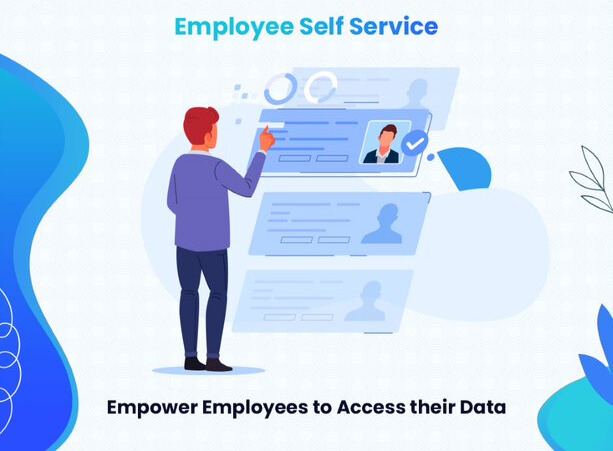
In today’s fast-paced work environment, managing employee leave requests and approvals can be a challenging task for HR departments. The traditional methods of handling leave requests often involve paperwork, lengthy approval processes, and potential for human error. This can lead to inefficiencies, frustrations, and decreased employee satisfaction. However, with the advent of Employee Self-Service (ESS) portals, managing leave requests and approvals has become more streamlined, efficient, and transparent. In this article, we will explore how ESS portals are revolutionizing leave management and enhancing the overall employee experience.
The Evolution of Leave Management
Before the digital age, leave management was a manual process involving forms, spreadsheets, and face-to-face approvals. This method was not only time-consuming but also prone to errors and miscommunication. As organizations grew and the workforce became more diverse and dispersed, the need for a more efficient system became apparent. The introduction of ESS portals has been a game-changer in this regard.
What are Employee Self-Service Portals?
Employee Self-Service portals are digital platforms that allow employees to access and manage various HR-related tasks without the need for direct intervention from HR personnel. These portals typically offer functionalities such as updating personal information, accessing pay slips, and, most importantly, managing leave requests and approvals.
Streamlining Leave Requests
One of the most significant advantages of ESS portals is the ability to streamline leave requests. Employees can log into the portal, view their leave balance, and submit a leave request in just a few clicks. This eliminates the need for physical forms and reduces the chances of lost or misplaced requests. Additionally, employees can specify the type of leave (e.g., vacation, sick leave, or personal leave) and provide any necessary documentation directly through the portal.
Automated Approval Workflows
ESS portals also come with automated approval workflows, which significantly speed up the approval process. Once an employee submits a leave request, it is automatically routed to the appropriate supervisor or manager for approval. Managers receive notifications and can approve or reject requests with just a few clicks. This not only saves time but also ensures that leave requests are handled promptly, reducing the backlog and potential delays.
Real-Time Visibility and Transparency
Transparency is a crucial aspect of effective leave management. ESS portals provide real-time visibility into leave requests and balances for both employees and managers. Employees can track the status of their leave requests and receive notifications about approvals or rejections. Managers, on the other hand, can view team leave schedules, ensuring adequate coverage and preventing overlapping absences. This level of transparency fosters trust and accountability within the organization.
Integration with Payroll Systems
Integrating ESS portals with payroll systems further enhances the efficiency of leave management. Approved leave requests are automatically recorded in the payroll system, ensuring accurate calculation of leave balances and pay adjustments. This reduces the administrative burden on HR personnel and minimizes the risk of payroll errors. Employees can also view their updated leave balances in real-time, helping them plan their time off more effectively.
Enhancing Employee Experience
The ease and convenience of managing leave requests through ESS portals significantly enhance the overall employee experience. Employees appreciate the autonomy and flexibility to manage their own leave without having to go through cumbersome processes. This empowerment leads to higher employee satisfaction and morale. Moreover, the quick turnaround time for leave approvals allows employees to plan their time off with confidence, reducing stress and uncertainty.
Overcoming Challenges
While the benefits of ESS portals are clear, implementing them may come with challenges. Organizations need to ensure that the portal is user-friendly and accessible to all employees. Training and support are essential to help employees navigate the new system effectively. Additionally, data security and privacy must be prioritized to protect sensitive employee information.
Future Trends in Leave Management
The future of leave management lies in further leveraging technology to enhance efficiency and employee experience. Artificial Intelligence (AI) and Machine Learning (ML) can be integrated into ESS portals to provide predictive insights into leave trends and optimize workforce planning. Mobile accessibility is also becoming increasingly important, allowing employees to manage their leave requests on the go.
Conclusion
In conclusion, Employee Self-Service portals have revolutionized the way organizations manage leave requests and approvals. By streamlining processes, providing real-time visibility, and enhancing the overall employee experience, ESS portals have become an indispensable tool for modern HR departments. As technology continues to evolve, organizations that embrace ESS portals and other innovative solutions will be better equipped to manage their workforce effectively and maintain a competitive edge in the market.
The journey to efficient leave management starts with recognizing the potential of ESS portals and taking proactive steps to implement them. By doing so, organizations can create a more organized, transparent, and employee-friendly work environment, ultimately contributing to their overall success.








get antibiotics without seeing a doctor buy antibiotics over the counter or Over the counter antibiotics pills
http://www.security-scanner-firing-range.com/reflected/url/href?q=https://biotpharm.com buy antibiotics from canada
get antibiotics quickly buy antibiotics for uti and buy antibiotics from india Over the counter antibiotics pills